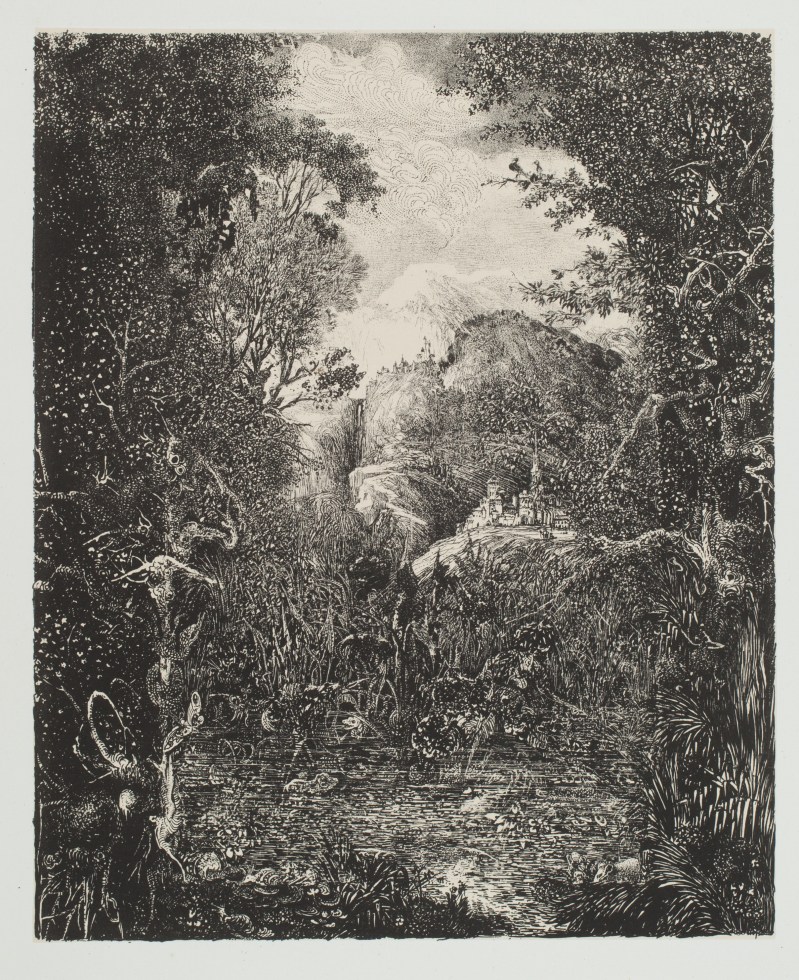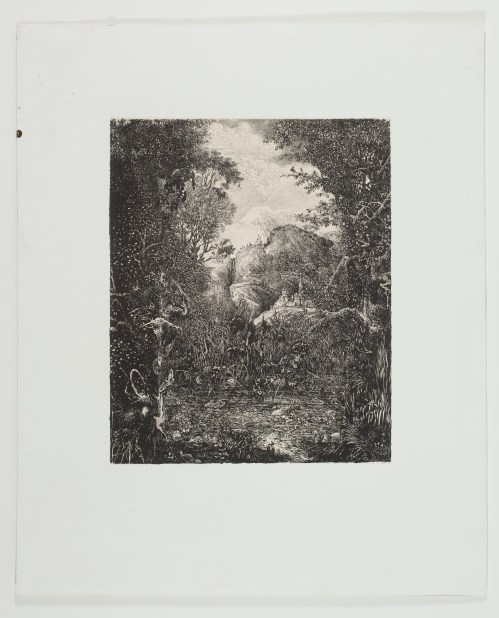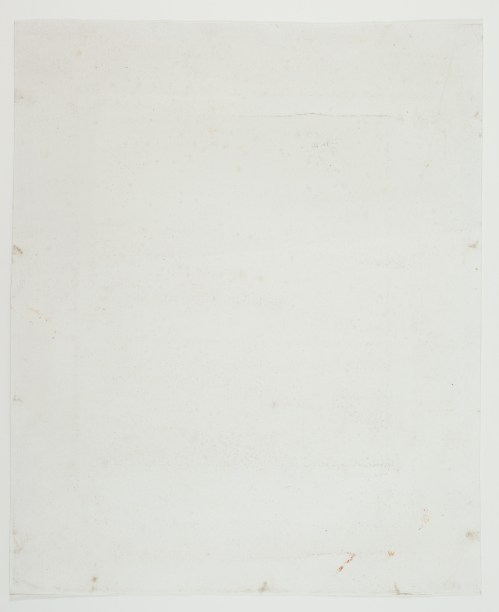Rodolphe BRESDIN: Les Villes derrière le marécage - 1878
SOLD
[The Towns behind the Swamp]
Lithography, 191 x 156 mm. Van Gelder 124 A, III/III
Impression of the 3rd state (of 3), with the sky and the pond lightened.
Superb impression printed on light cream chine appliqué pasted on heavy wove paper. In excellent condition. A tiny stain on the left edge of the sheet. Wide margins (sheet: 317 x 260 mm).
States I to III correspond to two different entries in Van Gelder's catalogue raisonné: state I is described at number 124 under the title Le Papillon et la Mare [The Butterfly and the Pond], while states II and III, after transformation of the image, are described at number 124 A under the title Les Villes derrière le Marécage [The Towns behind the Swamp].
The Butterfly and the Pond was an illustration project for the eponymous fable in Hippolyte Thierry-Faletans' collection Fables et Contes, which was published in 1871. Van Gelder writes that this "book would not deserve our attention if it had not given us a few lithographs by Bresdin (cat. 122-128) - seven in all (taking into account the redone drawings), painstakingly executed between the end of March and mid-September 1868 and which the artist would retouch on several occasions, some as much as ten years later". (Appendices, p. 168, translated by us)
Throughout the period when the illustrations were being designed, communication between the author and the artist was very laborious, even conflictual, as can be seen from the few letters that have survived and are quoted by Van Gelder in his chapter on Hippolyte de Thierry Faletans' commission (Appendix III): Thierry-Faletans assailed Bresdin with advice and recommendations, telling him in great detail what he wanted to see in his lithographs; Bresdin complied with his wishes, but also made a few choices that Thierry-Faletans did not understand: in the end, the author refused Le Papillon et la Mare and Bresdin was forced to resume his work on a new stone: this would be Le Papillon et la Mare, version II, Van Gelder no. 125.
Bresdin did not abandon his first stone, however, and reworked it ten years later. Van Gelder writes: "The reworking dates from 1878. An invoice from Lemercier shows that Bresdin had 50 impressions printed. We believe that it was during this printing that Bresdin created the third state, the second being only an intermediate state of which only a few trial proofs probably exist" (translated by us). Bresdin enlarged his composition on all sides by adding very dense vegetation. He erased the two large butterflies whose wings were spread out on the upper and lower edges of the image and retouched many details. In the third state, the sky and pond have been lightened.
The title Les Villes derrière le marécage was given by Van Gelder. However, he points out that an invoice from Lemercier dated 2 October 1878 calls it Le Rat philosophe. Although the rat is not a character in Thierry-Faletans' fable, he had mentioned the possibility of adding one on the banks of the pond, in the company of all sorts of small animals. We can see one on the lower edge of the image in the first state, still visible above the tufts of grass in the lower right-hand corner of the third state.
Provenance: Collection Louis-Maurice Boutet de Monvel and then by descent. Van Gelder reports that in September 1881 Boutet de Monvel made a payment to settle part of Bresdin's debts to his printer, Lemercier (Rodolphe Bresdin, Monographie, p. 135).





